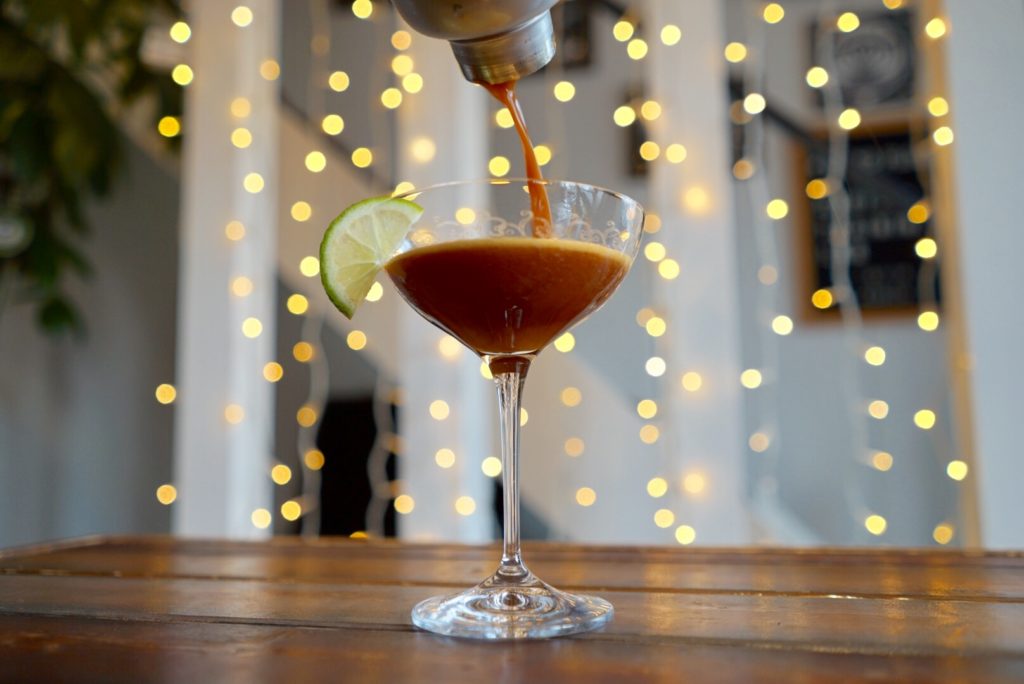
Black Gimlet – UNLIMITED COFFEE BAR
All of a sudden, we are surrounded by all kinds of interesting coffee-based signature drinks, from aesthetic presentations to innovative flavors, not to mention that many of those just taste so good, making us ask for more. However, we hardly realize how a signature drink comes into existence and then gets popular, what baristas should bear in mind when creating a new drink, and where signature drinks will lead us to?
Trendy Coffee, Playful Flavors
It’s hard to give signature drinks a proper definition. In most cases, it refers to any unique or special drink that expresses either a theme or the person creating it. Some- times, it can be a different version of an existing drink. Local ingredients are often incorporated into signature drinks, which becomes a reflection of culture.
We can easily find signature drinks in a coffee shop anywhere nowadays, which is carving a large corner of the space in the world of coffee. Fruits, spices, flowers, and liquors are now widely used to create such signature drinks. For example, Espresso Sidecar is made with high-quality lemon juice of Japanese lemon harvested in Wakayama Prefecture, which is a competition coffee cocktail by UNLIMITED COFFEE BAR in Tokyo. “In cocktail making, bartenders use citrus a lot,” explained Daichi Matsubara, co-founder of UNLIMITED, “When we make coffee cocktails, we use citrus fruits a lot because the acidity in them is the most common acidity in coffee too.” According to Matsubara, they opt for locally-produced fruits like yuzu, lemons and tangerines for their signature drinks.
Spices like cinnamon sticks, nutmeg, star anise, ginger, and clove have become a symbol for signature drinks. Moroccan Coffee is famous for the use of spices. In some recipes, up to nine different spices are mixed and blended into coffee for an aromatic taste. In the world of mixology, herbs and spices are an essential part in creating unique flavors.
Rosemary, as an example, has a strong aroma with a warm yet peppery bitter taste. It has a playful aftertaste, which is woody, balsamic, and astringent. The taste characteristics make it go well with fruits like apricots and oranges. Meanwhile, it is a good decoration for signature drinks. In the 2015 World Coffee in Good Spirits Championship (WCIGSC), Ondrej Hurtik from Doubleshot in the Czech Republic finished at the second place with his Rosemary Cocktail, which featured rosemary as a garnish. Since 2005, the championship has been a great source of innovative coffee-based drinks, allowing competitors of different cultural backgrounds to show their sensory skills with a wide range of ingredients like coffee, fruits, spices, syrup, and more.
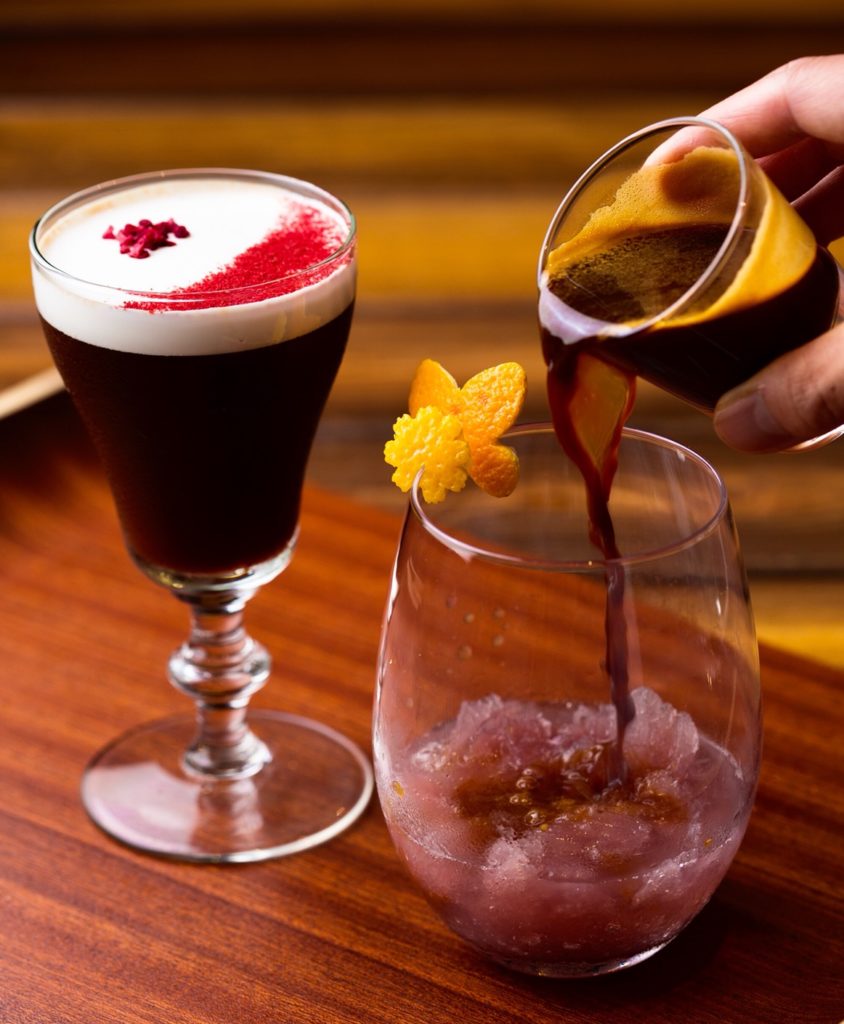
Irish Breeze – UNLIMITED COFFEE BAR
In cocktails and tea drinks, it’s not rare to use flowers either as a decoration or for a hint of floral taste. With a great number of floral-flavored syrups as well as mixing methods borrowed from mixology, there are many new floral innovative coffee drinks. For example, osmanthus-infused coffee has gained a wide popularity in China for its pleasant fragrance and easy-going flavors. As early as in 2014, Nespresso introduced an online recipe featuring osmanthus-scented honey as its special coffee drink to celebrate the Chinese New Year. Five years later, the brand launched a seasonal bundle, offering a DIY pack for customers to make the drink at home easily. Flowers like lavender also go well with both coffee and liquors.
As good friends for a long time, coffee and liquors are both featured in more and more signature coffee drinks thanks to the annual WCIGSC for a wide range of inspirations. Even liquor manufacturers have noticed the trend as a collection of coffee-infused spirits has come into existence. For example, SKYY Vodka Infusion series, coffee-infused tequila Patron Xo Café, and Copper & Kings Destillaire Intense Café which is pot-distilled brandy with Arabica cold brew coffee.
A Road to Success
As someone once said, “Out of limitations comes creativity.” In the creation of signature drinks, there is no boundary, no limitation, and no rule but the power of imagination that leads you to the magic world of signature drinks.
Choose Your Own Theme When Geisha meets with Martini, how will the drink ignite your taste buds? UNLIMITED COFFEE BAR launched its latest offer Geisha Martini in store, which consists of Geisha espresso and Vodka. “We have been inspired by the refreshing and delicate acidity of Geisha variety,” said Matsubara, “We wanted to create a coffee cocktail of Martini with a twist. The special drink tastes so fruity though no fruit is added at all.”
Renowned for a series of coffee cocktails, UNLIMITED was founded by Daichi Matsubara and his wife Rena. The duo has been judging at JCIGSC from the very beginning when the competition entered Japan. “Fortunately, we have all the knowledge and experience to create coffee cocktails, which is very natural for us to have them on our menu,” explained Matsubara. He believes that coffee cocktail can be a bridge between the world of coffee and alcohol.
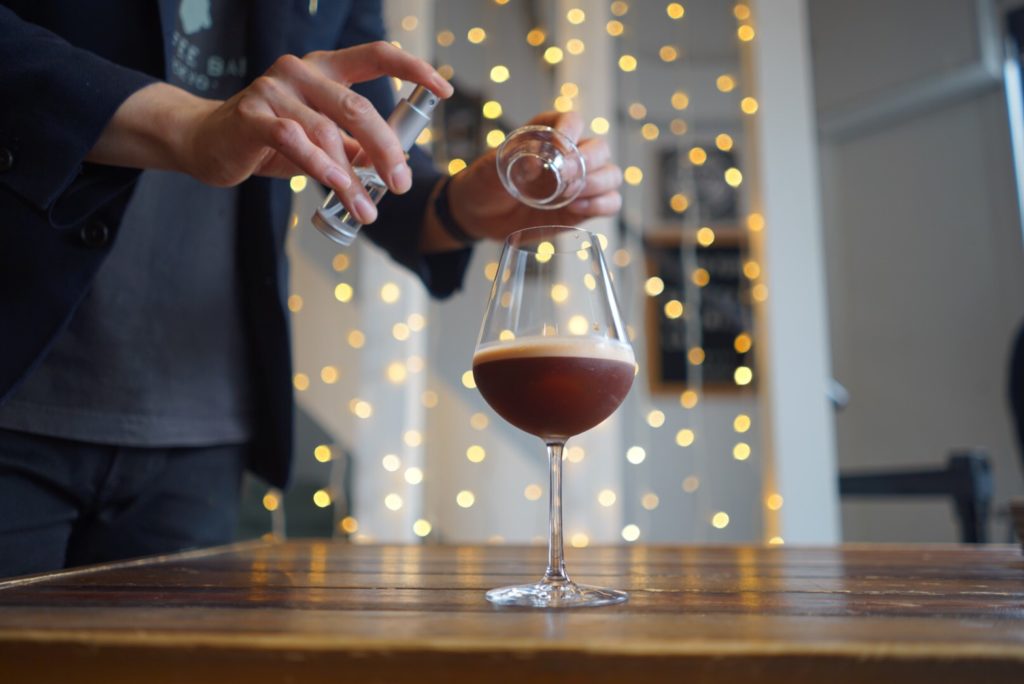
Geisha Martini – UNLIMITED COFFEE BAR
Years ago, it was quite rare to find a shop serving high quality coffee cocktails in Tokyo. “When we opened the coffee shop, we wanted to develop our signature coffee drinks. We believe coffee cocktails are the best tool to showcase our coffee quality as well as barista and bartender skills,” Matsubara said. It’s true as you still can’t find many such shops around though the number of coffee shops offering coffee cocktails is increasing in Tokyo, according to Matsubara.
Challenge the Taste Buds Most Japanese expect coffee cocktails to be a bitter taste drink due to the traditional dark roasted coffee consumed in Japan normally. “We find ourselves so lucky because we have many opportunities to introduce delicious coffee and drinks to many customers from all over the world, who are new to high quality coffee,” Matsubara said. UNLIMITED COFFEE BAR is just a stone’s throw away from Tokyo Skytree, a popular tourist attraction.
In Bangkok, another top tourist city, Eureka Coffee Tap is the first nitro coffee tap bar in Thailand, selling everything nitro-infused that you could think of. Even their signature drinks use nitrogen gas too. By developing interesting flavors with a Thai twist, customers can expect an adventurous coffee journey at Eureka. For example, its signature Salted Egg Latte and Durian Iced Tea will blow your mind away with the innovative flavors. The former blends caramel salted egg syrup into traditional caramel latte topped with a traditional Thai dessert called Thong Yip, which is made from sweetened egg yolk. The presentation looks interesting. So is the playful taste.
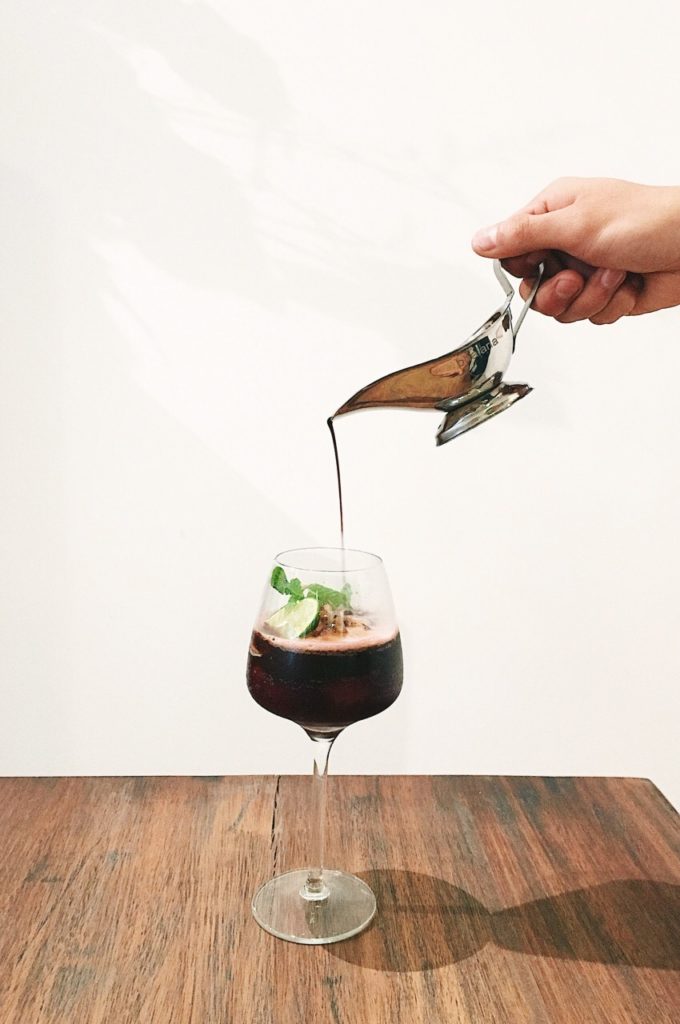
Coffee with Salted Lime and Mulberry – La Viet Coffee
Due to six nitro taps lineup along the long bar, Eureka looks more like a bar than a coffee shop. With the nitro solution to creative drinks, the cafe serves nitro-infused drinks ranging from coffee, tea to lemonade. The lemonade is the key to Eureka’s signature refreshing soda range, which is popular in tropic cities like Bangkok. For example, Sakura Yuzu Lemonade is yuzu soda mixed with sweet cherry syrup, garnished by rosemary.
Cherish Local Ingredients In Vietnam, drinking coffee has been a long-established tradition since the late 19th century when French colonists first brought coffee into the country. Due to a shortage of fresh milk at that time, condensed milk was used to go with dark roasted coffee, which then became the traditional way to drink coffee here. However, that was not the end. The cup of ca phe, or coffee, now has many variations playing with local ingredients like coconut or even traditional food like Pho.
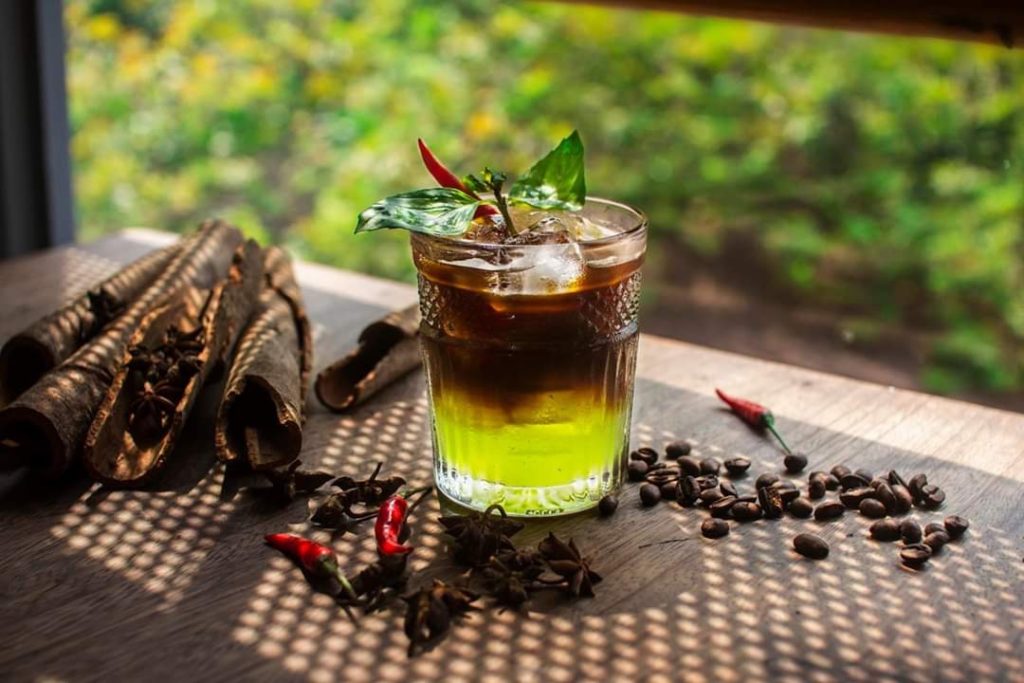
Phở_s Cocktail Coffee – La Viet Coffee
La Viet Coffee was established in 2013 in Dalat City, using Arabica coffee grown in the country only. “We grow, harvest, process, roast and retail local Vietnamese Arabica coffee,” introduced Tran Nhat Quang, co-founder and CEO of La Viet Coffee. Along with Co-founder Nguyen Thi Nhu Ngoc, Quang saw the potential of the locally-grown coffee and the specialty coffee market.
The coffee shop has many signature drinks, ranging from Pho Coffee, Coffee with Tea and Fermented Brown Rice, to coffee cocktails like a salty version of Coffee Margarita and Bloody Cold Brew. The latest one on the menu is Coffee with Jaggery. “The cold drink is welcomed and loved by many locals in summer time like now,” said Quang.
Unlike traditional Vietnamese coffee using dark roasted Robusta beans, La Viet uses Dalat-grown Arabica with a honey process in light medium roast. “Honey process brings out the sweetness of the coffee and makes signature drinks more complex in taste,” Quang explained. According to Quang, local plants and agricultural products are the inspiration when they create new drinks. “We think they can be friends with coffee to make drinks interesting.”
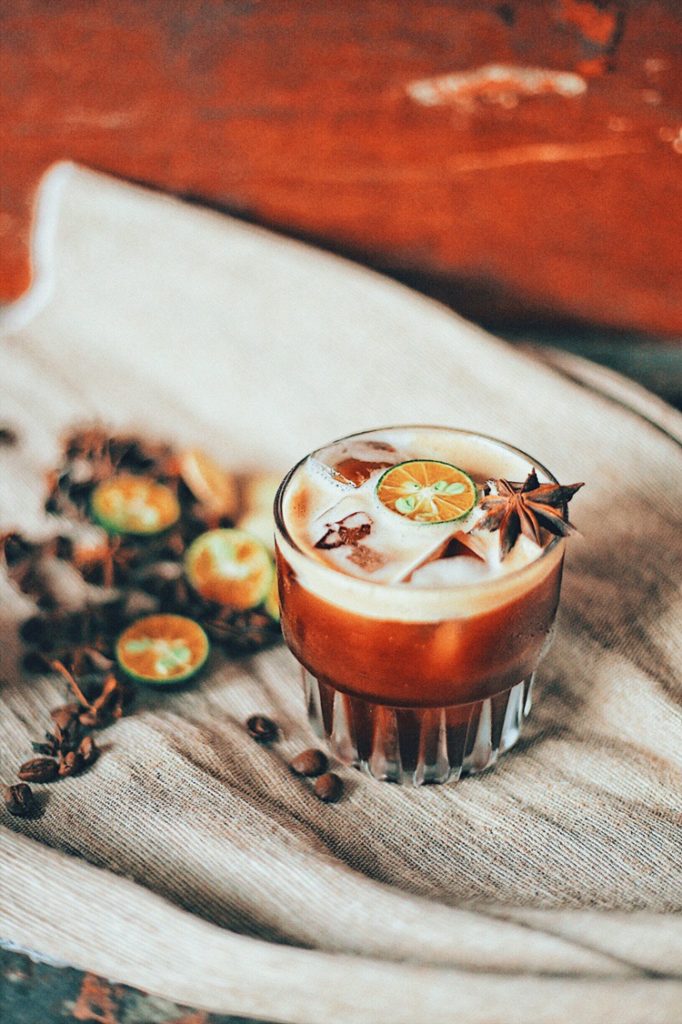
Kumquat coffee cocktail – La Viet Coffee
Meanwhile, osmanthus is now a popular ingredient in many signature coffee drinks on the menu in China. As a beautiful edible flower for garnishing, osmanthus is famous for its light pleasant scent as well as a versatile ingredient in Chinese cuisine. A cafe called 9 O’clock in Shanghai introduced Osmanthus Latte in 2015, followed by Zoo Coffee in Hangzhou. In the past years, big coffee chains like Starbucks and Costa Coffee also launched osmanthus-themed seasonal drinks in China. Matrix Coffee, headquartered in Suzhou of Jiangsu Province, introduced Osmanthus Latte with Fermented Rice last winter. The seasonal drink can be served both hot and cold with a pleasant scent of the flower. It also features an interesting flavor that reminds people of Chinese traditional rice wine and dessert Fermented Rice Dumplings. The growing popularity of the special drink has inspired peer coffee shops to follow the trend and redevelop their own osmanthus-infused coffee too.
A Glimpse of the Future
Coffee is no longer a simple beverage but a part of daily life for many people around the world, whether they have the drinking habit as a tradition or not. New signature drinks not only have an innovative taste for people to discover but also show respect to local food culture. Global-inspired flavors are getting more important as a trend in the coffee industry. “When we travel, we can meet many new local fruits, foods, alcohol, and so on,” shared Matsubara, “Even in Japan, there are lots of stuff which we have not met yet.”

Hot Chocolate with coconut milk – La Viet Coffee
At the same time, “People seem to drink coffee faster for the need, not for enjoyment,” said Quang, “We are trying to make people enjoy more when they drink coffee by creating new drinks.” That’s probably why so many RTD coffee makers are working hard to introduce new flavors to their collections.
As technology develops, it not only improves the way we live, but also changes the way we drink coffee. Early last month, the launch of TOUCH AND GO COFFEE by BOSS Coffee, a coffee brand under Japanese beverage giant SUNTORY, caught much attention from the public worldwide. The new type coffee shop looks exactly the same as other cafes but with no staff and serving counters. Customers can place an order directly via Line, a communication app similar to WeChat in China. Firstly, add the cafe as a friend and then place an order with their preferences. The personalized drink will be stored in a delivery collecting box in store within a time slot suggested by the customer. At the moment, there are only two drinks available, Original Black and Original Latte. However, the customer can choose it to be hot or cold, its roast level, and with sugar/extra syrup or not. A unique color sticker will be automatically allocated to each order to make it even more personalized. A code will be sent to the customer for pickup. The “Order-Pickup-Go” model makes it super easy for both customers and coffee shops. However, it still takes some time to see whether it will work in other countries in the future.
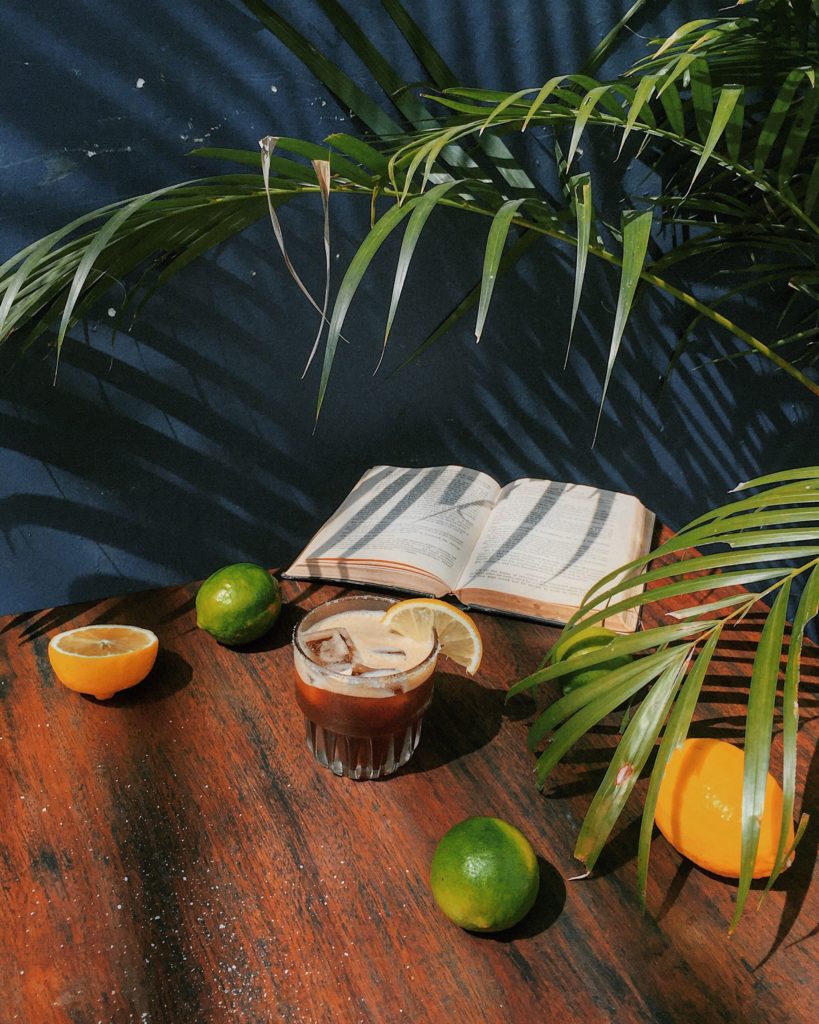
La Viet Coffee
Meanwhile, coffee shops like UNLIMITED COFFEE BAR believe that communication plays an important role in coffee drinking experience. “We strongly think customers are seeking not only a good cup of coffee but also a good drinking experience including presentations from baristas,” explained Matsubara, “Technology development such as new machines and smart technologies is a good thing for users to improve efficiency and quality.”
After all, it’s about creating a unique drinking experience for customers, no matter whether it is a personalized RTD drink from a pickup store or a well-presented coffee made by a professional barista in store. The choice between a fast track to get coffee and intriguing flavors to taste is not easy to make. But who knows, where technologies and innovations will lead us to in the future? Let’s wait and see!
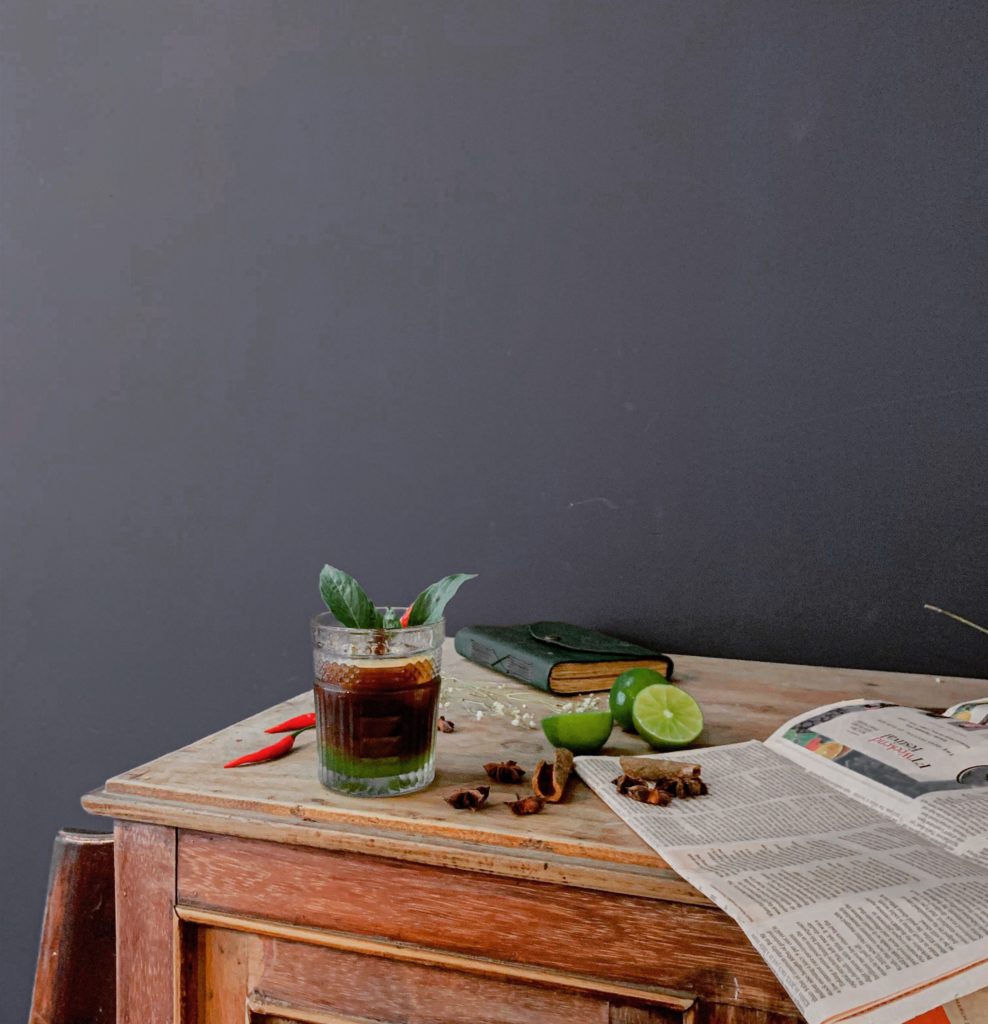
La Viet Coffee
Ask The Pro
Where do you get the inspiration?
Daichi Matsubara is co-founder of UNLIMITED COFFEE BAR in Tokyo, Japan. To his team, the inspiration for new drinks come from everyday life. “When we eat and drink, we always think about the tastes and flavors,” he explained, “We are often inspired when we find something really delicious.”
Matsubara: You and your inspirations are what you eat and drink every day.
What kind of coffee (beans) do you use for your innovations?
Matsubara: Most of our coffee is roasted to medium level, not too light or not too dark because we want to fully develop the unique flavor and sweetness of each coffee. Actually, we use any kind of coffee, processes, brewing methods for our cocktails. Each coffee has its own unique flavors. We always try to enhance them and we choose the spirits and liquors ac- cording to the taste of coffee we use.
Example: Both coffee beans of natural and washed process are used for the Irish Coffee at UNLIMITED COFFEE BAR but the choice of whiskey will be very different.

Black Gimlet – UNLIMITED COFFEE BAR
What are the key elements for a signature drink from competition to become a widely beloved drink for the public?
Matsubara: We think that the drinks served in the competition should be coffee-oriented and the taste also should be coffee-dominant in most cases. But we sometime serve a drink that contains much less coffee compared to the competition drinks because most customers are looking for a good balance between coffee and other ingredients.
Example: UNLIMITED COFFEE BAR doesn’t serve Espresso Tonic for the crema tastes bad in it in most cases. Instead of using espresso, they use cold brew coffee for the original Cold Brew Tonic. The recipe is ⅔ cold brew coffee, ⅓ tonic water with 1-2 teaspoons of sugar syrup. This Cold Brew Tonic does not have a strong coffee taste but coffee and tonic combine well with each other.
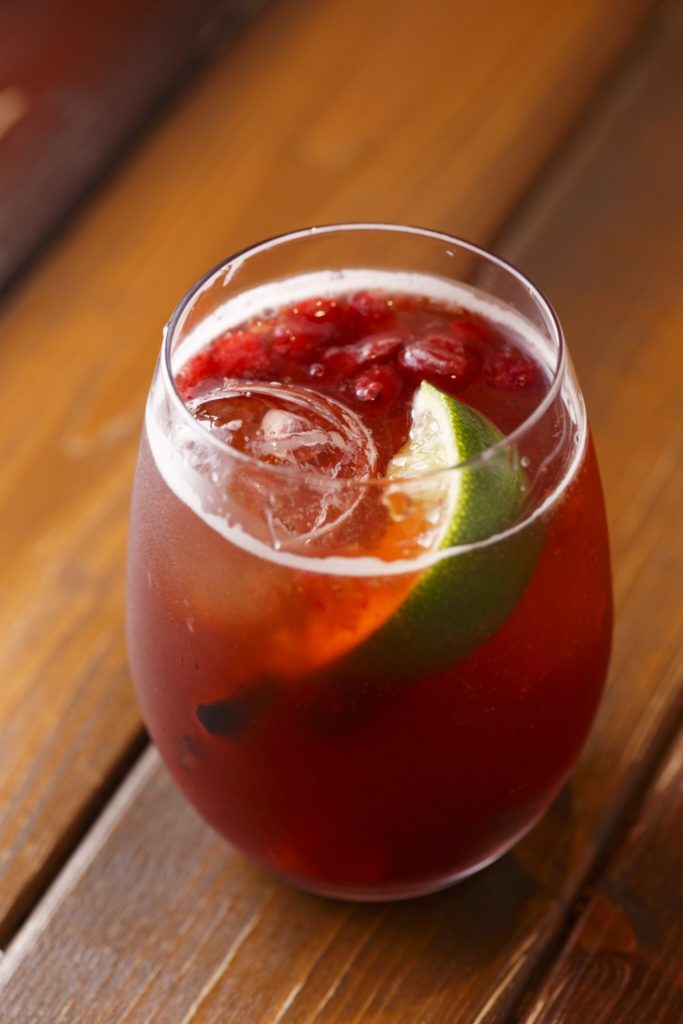
Cold Brew Tonic – UNLIMITED COFFEE BAR
What should you bear in mind when making signature drinks?
To Quang, co-founder of La Viet Coffee in Vietnam, there is no rule to follow but two keywords: balance and interesting. “The ingredient used should be balanced in the taste of the drink,” he explained, “In a sip from the cup, it must have the character and let customers feel it is an interesting drink, which makes them feel good and comfortable.”
Quang: Understand the characters of each ingredient and use and mix it wisely.
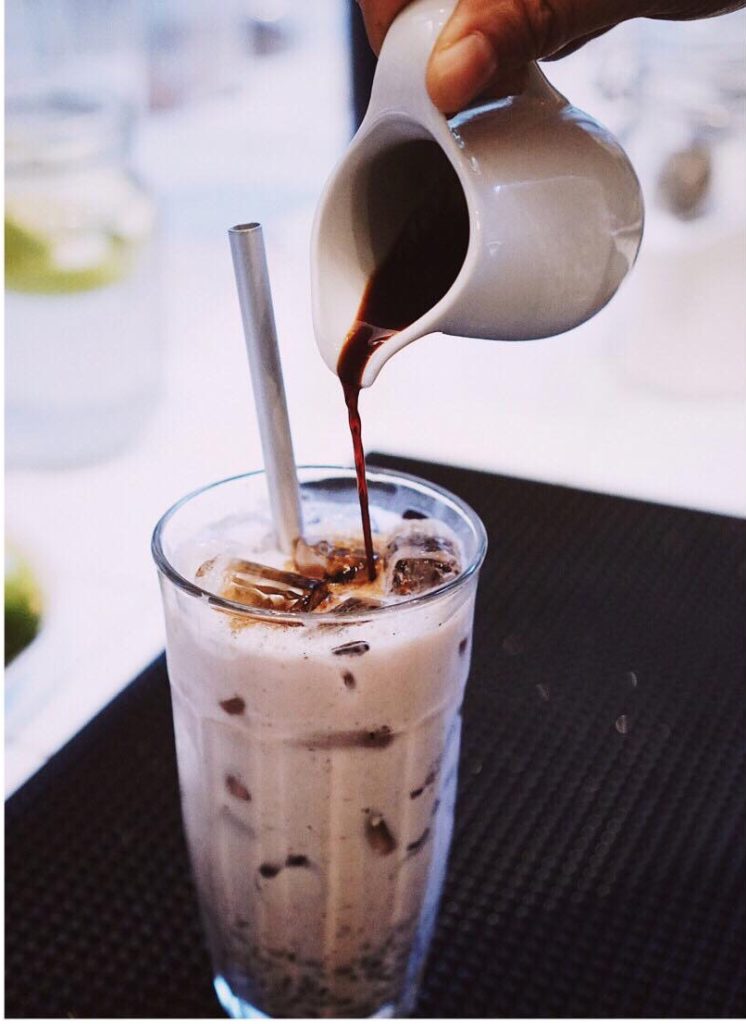
Milk Coffee with Oolong Tea – La Viet Coffee
Does it matter when you choose the right container to present a signature drink?
Quang: Yes. Choosing the right container will help express the characters of the drink and give more values to it too. Hot drinks can be served in a ceramic glass to maintain heat for longer and also for a better taste. Cold drinks are normally served in a glass, making it look appealing to customers.
Example: Matcha Affogato, for example, is served in a glass made from bamboo at La Viet Coffee while most coffee cocktails are presented in cocktail glasses.









NO COMMENT